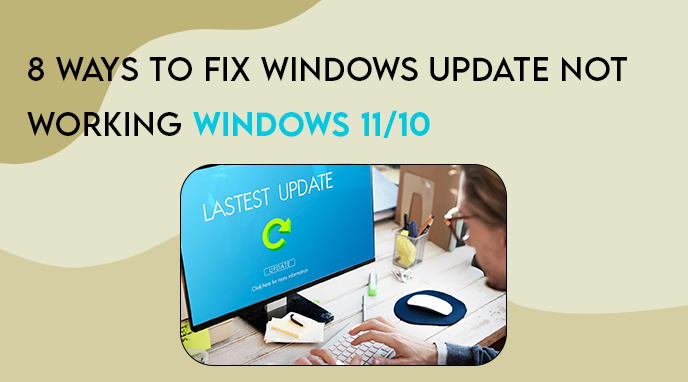8 Ways to Fix Windows Update Not Working Windows 11/10 - Techdrive Connect
In this blog, we'll explore 8 effective ways to resolve Windows Update issues, with the assistance of TechDrive Connect. However, at times, users might encounter issues where Windows Update fails to work as expected. If you're facing issues such as Windows Update Not Working Windows 11 or 10, then read the effective ways below.
Check Internet Connectivity:
Before diving into complex solutions, make sure your device has a stable internet connection. Sometimes, slow or unreliable connections can hinder Windows Update. Verify that your Wi-Fi or Ethernet is working properly.
Restart Your Computer:
A simple but often effective solution is to restart your computer. This helps clear any temporary glitches that might be affecting the Windows Update process. After the restart, try running Windows Update again.
Run Windows Update Troubleshooter:
Windows offers built-in troubleshooters for various system issues, including Windows Update problems. Search for "Troubleshoot" in the Windows search bar, select "Additional troubleshooters," and then run the Windows Update troubleshooter. This tool can automatically detect and fix common update-related issues.
Check Date and Time Settings:
Incorrect date and time settings can disrupt the Windows Update process. Ensure that your system's date, time, and time zone settings are accurate. To do this, right-click on the time in your taskbar and select "Adjust date/time."
Clear Windows Update Cache:
A corrupted update cache can lead to issues. To clear the cache, stop the Windows Update service, delete the contents of the "SoftwareDistribution" folder (found in C:\Windows), and restart the service. This process can help resolve update-related problems caused by cached files.
Disable Third-Party Security Software:
Sometimes, third-party antivirus or security software can interfere with Windows Update. Temporarily disable or pause such software, then attempt to run Windows Update again. If the update succeeds, consider adjusting your security software settings to accommodate Windows Update.
Perform System File Check (SFC) and Deployment Imaging Service and Management Tool (DISM) Scans:
Corrupted system files can lead to Windows Update issues. Run the SFC scan by opening Command Prompt as an administrator and entering the command "sfc /scannow." Additionally, run the DISM scan with the command "deism/online /cleanup-image /restore health." These scans can repair corrupt files and enhance system integrity.
Manually Download and Install Updates:
If all else fails, you can manually download and install updates from the Microsoft Update Catalog. Search for the specific update that's causing issues and download the corresponding files. Be cautious when manually installing updates, as incorrect installations can lead to further problems.
Conclusion
Encountering Windows Update problems on Windows 11 or 10 can be frustrating, but there's no need to panic. TechDrive Connect offers a range of effective solutions to get your system back on track. From basic troubleshooting steps like checking your internet connection and restarting your computer to more advanced methods like running troubleshooters, clearing cache, and performing system scans, you have a variety of options to tackle Windows Update issues.
Remember to approach each solution methodically and take your time to ensure that each step is properly executed. If one method doesn't work, don't get discouraged; move on to the next until you find the solution that resolves your Windows Update woes.
By following these eight ways to fix Windows Update not working, you can keep your Windows 11 or 10 system up-to-date and running smoothly, ensuring optimal performance and security for your device.



0 Comments On this Blog